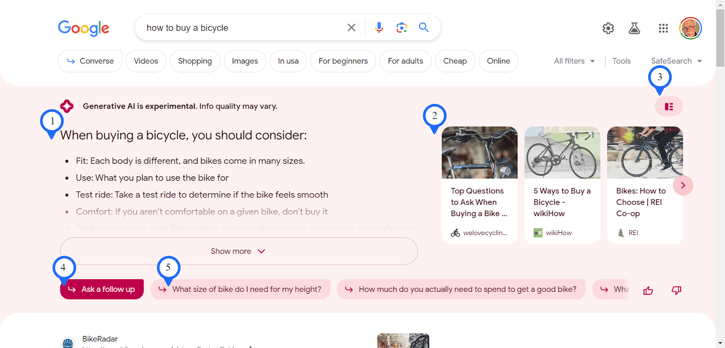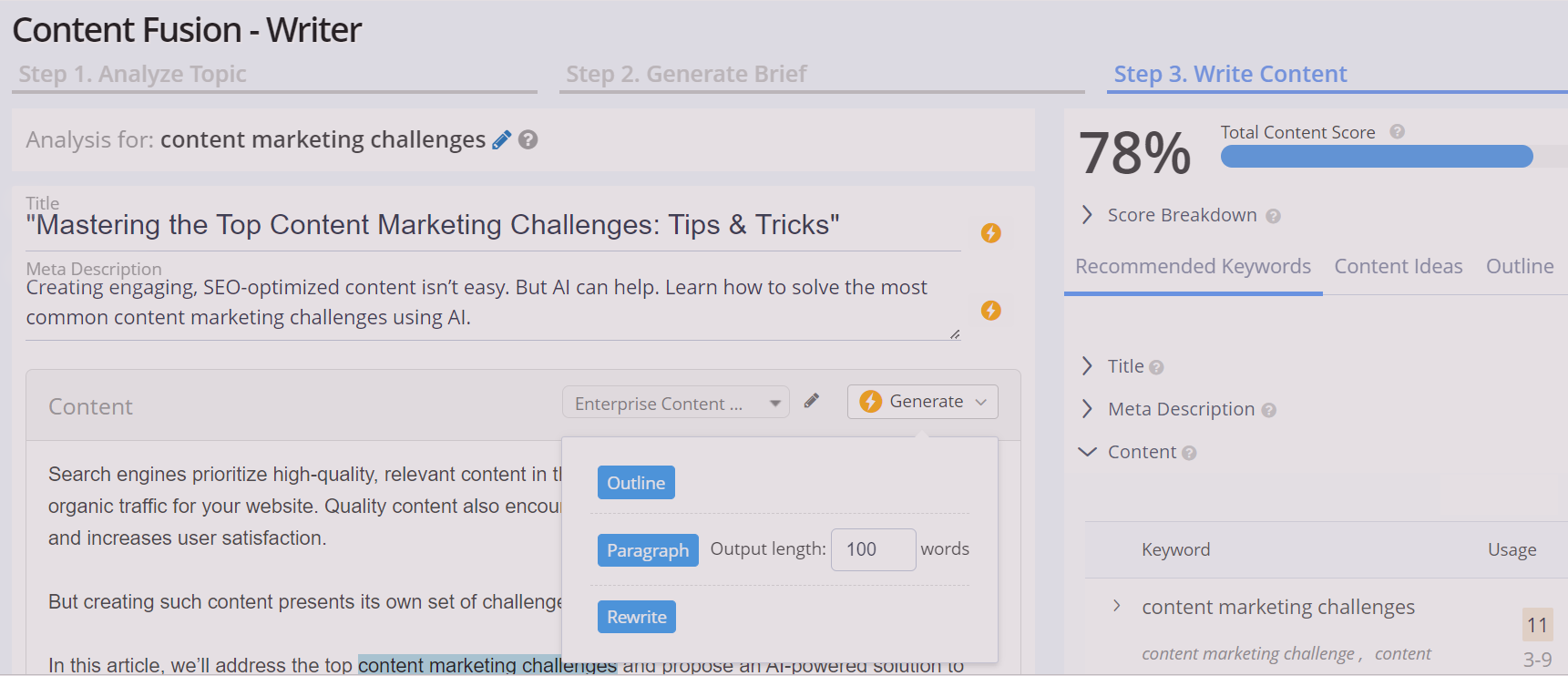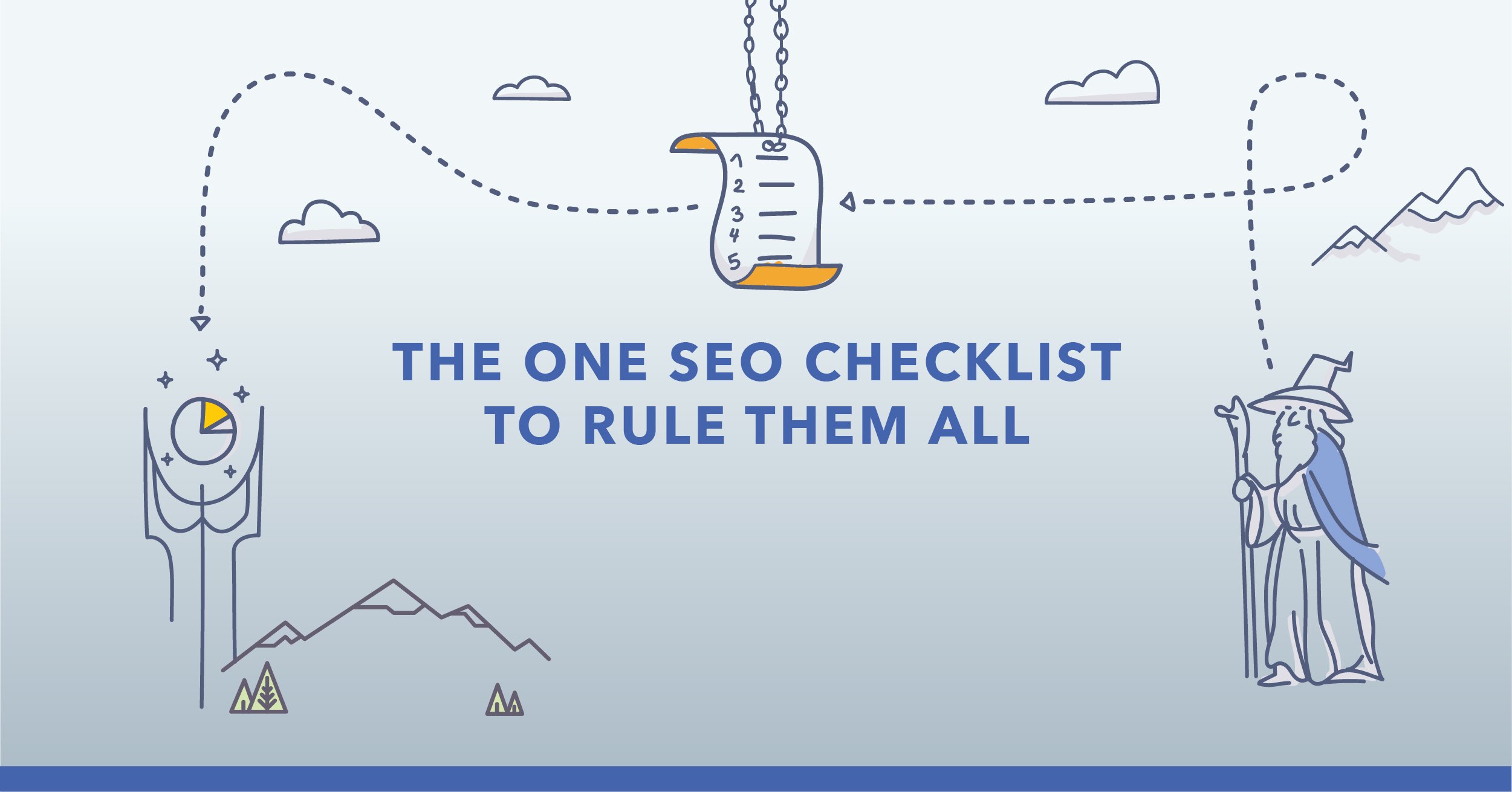The world of SEO experienced major shifts in recent years and, if you ask me, this year looks like it might bring even bigger changes.
With the ongoing impact of rapidly advancing GenAI, enterprise SEOs must refine and adapt their approaches to stay ahead.
Not sure where to start? We’ve laid out 12 key strategies that will empower enterprise companies to achieve success in the competitive digital sphere of the new year.
Prefer video? Watch our 34-minute webinar led by SEO experts Mark Traphagen and Chris Sachs:
Table of Contents:
- Growth Through Efficiency: AKA Doing More With Less
- Leverage Forecasting To Prioritize Efforts
- Prepare for AI in Search (Lessons from SGE)
- Focus On Search Visibility & Share of SERP Visibility
- Explore UGC (User Generated Content) Opportunities
- Improve Content Quality and Intent Targeting
- Be E-E-A-T Aware But Not Obsessed
- Leverage Google Shopping
- Collaborative SEO for Faster Execution
- User Experience (UX) Optimization
- Conduct SEO Testing for Advanced Insights and Growth
- Take a Proactive Approach to SERP Volatility
Didn't catch our list from last year? Here's a recap of our 2023 SEO strategy recommendations. What do you think should have made the cut?
1. Growth Through Efficiency: AKA Doing More With Less
Pre-covid many enterprises had a “growth at all cost” mindset, investing a lot in resources and services to expand as much as possible.
Now that the economy is in a worse place, companies are a lot more conservative, with a focus on maintenance and recouping lost business. Many businesses are also faced with the tough decision of choosing between keeping their team or their SEO tools.
So what we’ve been hearing lately from SEOs is, “how can I grow through efficiency?” Contrary to the growth-at-all-cost mindset, SEOs are now trying to find ways to do more with less.
This means companies are often looking for solutions to accomplish tactical, quick SEO wins. The journey to SEO success has now become a series of sprints rather than a marathon.
Two of the easiest and most common quick wins we see companies going after are:
- Simple Technical Fixes: Technical fixes that you can easily implement right away regarding things like missing content, duplicate content, or incorrect canonicalization.
- Quick Optimizations: Optimizations that increase your chances of moving up in the SERP right now. These quick optimizations may include optimizing titles and description, internal linking to strengthen topic clusters, or updating existing content.
To keep up with the reactionary market, we suggest investing in resources that will help you achieve these quick wins at enterprise scale.
For example, our AI-powered SEO assistant, Sia, saves you a significant amount of time by generating SEO-optimized titles and meta descriptions for thousands of pages, implementing internal links at scale, and much more.
Recommended Reading: How to Use Generative AI for SEO
2. Leveraging Forecasting To Prioritize Efforts
In our recent discussions with enterprise SEOs, especially within the retail sector, there's a growing emphasis on leveraging forecasting to prioritize SEO efforts.
As previously stated, rather than pursuing long-term projects, bootstrapped SEO teams want to know what they can work on right now to achieve growth and earn their resources.
When it comes to better prioritizing SEO efforts, typical strategies like looking at search volume or competitors, don’t necessarily do it. So we suggest that companies focus on forecasting traffic potential. Specifically, forecasting potential traffic loss.
Typically, SEOs and marketing teams forecast how much potential traffic and resulting revenue they will generate from SEO efforts. But this approach sets a new expectation that you’ll achieve the potential you’ve pitched to your CMO. No pressure.
That’s why we recommend forecasting based on how much traffic you will lose by not continuing to implement SEO strategies. This method of focusing on recoup and loss metrics rather than growth metrics when prioritizing projects is much easier to sell internally when seeking buy-in for SEO efforts.
3. Prepare for AI in Search (Lessons From SGE)
Generative AI in search was perhaps the most talked about (and feared) topic of discussion among SEOs in 2023. With the impending release of Google's new Search Generative Experience, many SEOs were anxious about the potential impact of this massive change in search on organic traffic.
Just look at how much SERP real estate the many components of an SGE result would have potentially consumed.

However, on January 17, Google stated in the last section of a blog post that SGE will remain a Google Lab experiment indefinitely. The blog also mentioned that they will use SGE as a sandbox to test small applications of generative AI and incorporate the most useful ones into regular search.
So we do not expect to see SGE in its present form in regular Google any time soon. If it does ever get brought in, we suspect it will be for very limited and specific usage. In our testing and experience, SGE does not do a better job of satisfying user needs for most queries which may be why Google is holding off on using it.
But even though Google is not currently planning on implementing SGE into regular search, there is still a ton that we can learn from the experiment. Why? Because, it's likely that Google is still actively experimenting with using generative AI to try to improve the quality of their search results beyond traditional authority signals that they've relied on in the past.
So what have we learned? From our observation of thousands of SGE results, AI appears to look for helpful, authoritative content that answers the query thoroughly.
Some strategies to ensure your content fits this description include:
- Display the attributes of E-E-A-T (Experience, Expertise, Authoritativeness and Trustworthiness)
- Enhance the shopping experience on your site to be more attractive for SGE inclusion.
- Deepen keyword research – dive into discovering the intent, topical relevance, audience characteristics, and stage in the buyer’s journey for every keyword.
- Freshen up titles, meta descriptions and images
- Strengthen your content
We dive into each of these strategies in more detail in our comprehensive guide on how to navigate Google’s Search Generative Experience.
4. Focus on Search Visibility & Share of the SERP
We’ve been getting a lot of questions from SEOs about why impressions are dropping despite rankings not changing. There’s also been concern over how often rank positions lose impressions due to Google features dominating the SERP, pushing organic listings down.
One thing’s for sure, it’s not enough to just look at rank position anymore.
Today, SEOs need to focus on search visibility share and determine their pixel real estate towards the top of the SERP.
The next step will be finding ways to either expand or stabilize their real estate in the first ten results. If there's a consistent SERP feature showing up that’s pushing your number two result down and impacting impressions, consider these actions:
- Optimize for the SERP feature.
- Identify keywords that have a first fold opportunity.
- Assess the rankings of direct competitors and refine your content/strategy to compete more effectively.
5. Explore UGC (User Generated Content) Opportunities
With Google’s Hidden Gems and Perspectives initiatives geared towards surfacing more content from experiences and opinions of real people, user generated content – such as reviews and forum posts – is once again in the SEO spotlight.
We’ve seen a huge increase in this type of content being featured in the SERPs as Google has realized it’s what many people seek when making purchasing or other important decisions.
As a result, “Discussions and Forums” has popped up as a new SERP feature.
Getting more mentions in discussion forums is a good way to land this SERP feature. But it’s important to proceed with caution — many forums reject content that seems overly promotional or directly from a brand.
Another strategy is creating user forums on your own website and encouraging customer engagement. While established forums like Reddit often dominate this feature, forums from other sites still have a chance to appear.
Want to see how often the “discussion and forums” feature shows up for your keywords and how often you’re included in it? seoClarity’s Rank Intelligence makes it easy. All you need to do is click on the “discussion and forums” filter in the left side bar under “SERP Features.”
You can even identify and track which forum the SERP results are from (i.e. Reddit, Quora, etc.).
6. Improve Content Quality and Intent Targeting
Improving content will always be a top SEO recommendation. But now that generative AI has enabled a massive influx of mediocre content, standing out from the crowd is more important than ever.
Your content needs to be the best and most thorough coverage of its topic.
Plus, with Google’s growing use of AI to match content to queries, it’s crucial to create content focused on the various micro-intents users have when searching your topic.
Recommended Reading: Generative AI's Impact on SEO
To ensure your content is as comprehensive and helpful as possible, Topic Explorer in seoClarity outlines the entire user search journey (from their first search on a topic to their last) for all of your target keywords.

(Image example of a User Search Journey)
Optimizing your content for each stage in the search journey won’t just help you content stand out, it will also keep users engaged and on your page longer.
7. Be E-E-A-T Aware But Not Obsessed
Google’s emphasis on Experience–Expertise–Authority–Trustworthiness as the definers of content quality is always worth keeping in mind.
But that doesn’t mean there are specific “tricks or tweaks” that somehow “increase” E-E-A-T.
E-E-A-T is not a score that Google assigns to a page, but rather the overarching goals it has for the content it wants to rank.
So rather than worrying about things like listing who authored the page (unless your industry falls into the “your money or your life” category), strive for your content to be the best it can be compared to your competition.
For example, when it comes to demonstrating experience, referencing user-generated content is a great way to focus your research to ensure you know how people are talking about topics you care about.
Content Fusion, our AI content writer, also makes it easy to create strong SEO-optimized content by instantly generating content briefs, identifying missing information based on top-ranking content, and even generating paragraphs based on the specifications you enter into Content Profiles.

Reference our AI Manifesto for insight into how we ensure content generated with our AI content writer aligns with our commitment to the ethical and responsible use of AI.
8. Leverage Google Shopping
Another strong trend in Google search is the move to keep more and more of the user’s shopping experience on Google.
With the advent of advanced shopping filters and selectors, Google now does everything for the shopper except selling the actual product.
Our Ecommerce industry report revealed that 40-60% of ecommerce keywords triggered the Product Feature result which takes up roughly 80% of the visual real estate for many formats.
If you’re an e-commerce site, take a “if you can’t beat ‘em, join ‘em” approach and build up your use of and optimization for Google’s Merchant Center.
While you’re at it, It’s also a good idea to enhance image optimization and leverage visual search capabilities as image recognition technology becomes more prevalent.
9. Collaborative SEO for Faster Execution
Results don't happen in SEO until Google sees a change. That’s why execution is the key to success.
To ensure you’re able to execut more efficiently and frequently, one strategy is to embrace greater collaboration between SEO, IT, and other departments.
When working in a silo, bottlenecks can often occur throughout the implementation process of SEO strategies due to dependencies on various teams or departments.
But because other departments may not always have the time or resources to dedicate to SEO, automating execution through the use of Edge SEO technology helps enhance collaborative SEO efforts.
In 2022, we launched an SEO execution platform to help you get important tasks done in just a few clicks!
By leveraging this technology, you can expedite the implementation of SEO strategies by bypassing logjams. This speed in making live changes translates to quicker results, allowing you to leapfrog the competition.
10. User Experience (UX) Optimization
UX teams, brand teams, and paid advertising typically take priority when it comes to all big site changes. Unfortunately, SEO is often neglected, even for sites with great organic performance that other channels benefit from.
But SEOs have to find a place at the table when it comes to optimizing their site for user experience.
Specifically, increasing crawl efficiency will need to be a priority. Due to the influx of AI-generated content, Google’s index is facing limits despite its massive size. This means fewer pages on your site may actually make it onto the SERPs.
To make sure your most important pages get indexed by search engines we suggest:
- Optimizing your internal linking structure
- Update your sitemap regularly
- Speeding up your site
In addition to boosting SEO, websites that have a high crawl budget also have a much better user experience due to their quicker loading times and fewer server errors.
11. Conduct SEO Testing for Advanced Insights and Growth
The years of shotgunning SEO and hoping that something sticks are gone. Today, SEOs need to be very precise in their prioritization and decision-making due to their limited resources.
No two sites are the same, which means SEO testing is crucial to determine how to achieve quick wins and drive incremental growth without wasting time and effort on ineffective strategies.
But SEO tests are often foregone due to their technical difficulty and the considerable development time they require. Not to mention the challenge of justifying the resources needed to build the test.
That’s why we suggest ditching a manual approach when running an SEO test, and instead leveraging an SEO split testing platform that will allow you to easily execute tests and analyze results without the help of a dev team.
If you have those internal resources to support the test and control groups, deploy the test and analyze, here’s a great resource on The Right Way to Do SEO Testing.
12. Take a Proactive Approach to SERP Volatility
Google’s increasing use of AI to better align search rankings with user intent means SERPs may be even more volatile.
Taking a proactive approach is the key to maintaining your rankings.
One method is to keep an eye on the SERP volatility of your target keywords. By identifying which keywords tend to move around in the SERPs more often, you can focus on your more stable keywords. That way you won’t waste time and resources optimizing for volatile keywords.
Another approach is to look at how many of your competitors rank for your target keywords. More direct competitors ranking for a keyword may indicate a larger potential for ranking shifts.
Being aware of these risk factors will help you determine which keywords to invest effort and resources in.
Conclusion:
That concludes our lineup of top 11 SEO strategies for success!
Here's a quick rundown of the strategies one more time:
- Growth Through Efficiency: AKA Doing More With Less
- Leverage Forecasting To Prioritize Efforts
- Prepare for Google’s Search Generative Experience (SGE)
- Focus On Search Visibility & Visibility Share
- Explore UGC (User Generated Content) Opportunities
- Improve Content Quality and Intent Targeting
- Be E-E-A-T Aware But Not Obsessed
- Leverage Google Shopping
- Collaborative SEO for Faster Execution
- User Experience (UX) Optimization
- Conduct SEO Testing for Advanced Insights and Growth
- Take a Proactive Approach to SERP Volatility
Best of luck in the year ahead!
<<Editor's Note: This post was originally published in December 2023 and has since been updated.>>








Comments
Currently, there are no comments. Be the first to post one!